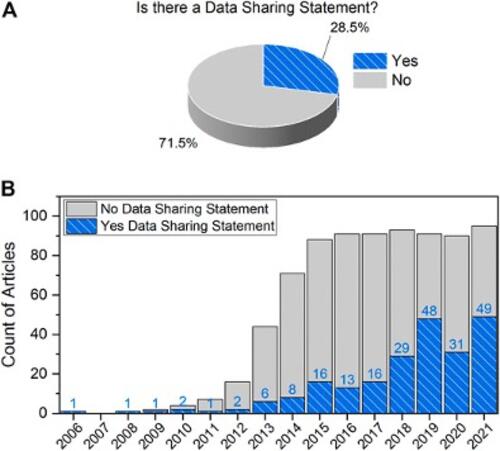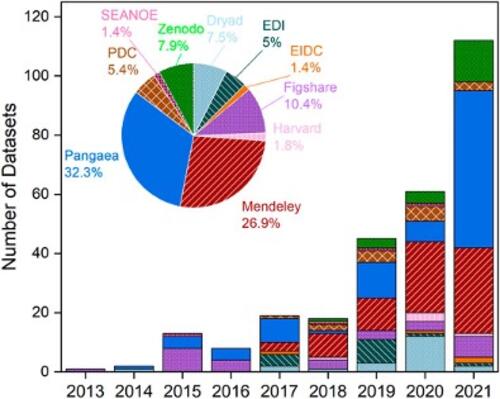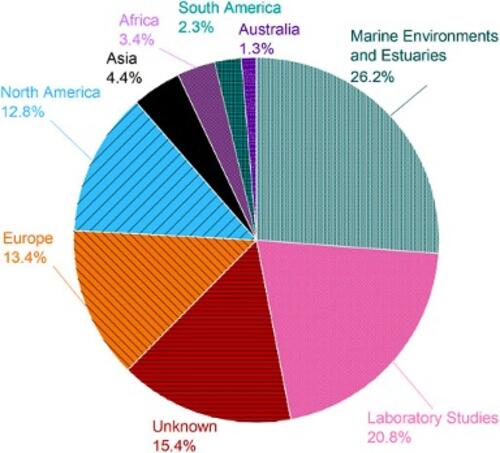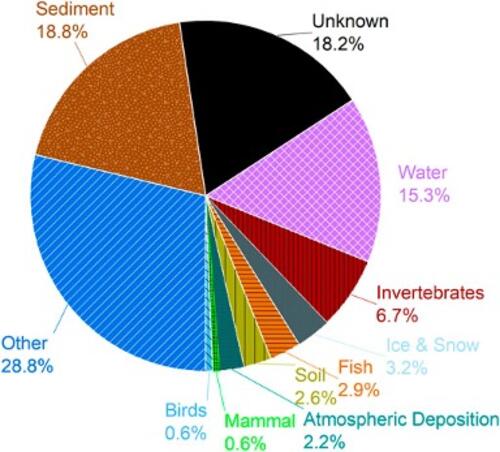Contact
![]()
 Philippe Van Cappellen, Department of Earth and Environmental Sciences
Philippe Van Cappellen, Department of Earth and Environmental Sciences
 Bhaleka Persaud, Department of Earth and Environmental Sciences
Bhaleka Persaud, Department of Earth and Environmental Sciences
Introduction
Microplastics in the environment are increasingly recognized as a serious threat to water quality, biodiversity, ecosystem services, human health and well-being and are spurring significant research interest. It is therefore important that resulting research data be properly curated, deposited and preserved in adherence with the FAIR guiding principles (Findable, Accessible, Interoperable, and Reusable) if it is to advance research, support funder investments and enable policy development. The data must also be available to scientists to conduct meta-analyses, confirm reproducibility and meaningfully compare data from different studies and geographic regions. While there are efforts to generate baseline (meta-)standards and create microplastics-focused data repositories, it is still unclear how much and what types of microplastics data are being collectively generated.
This study explored the extent to which the data that underpin environmental microplastics research articles are openly shared. Based on the findings, the study recommended best practices to improve data access and sharing.
Methodology
A Web of Science database search was performed using the words “microplastic” OR “microplastics”, which resulted in a total of 785 peer-reviewed English-language publications used in the assessment (Table 1). Each article was examined to determine whether a data sharing statement was included and, if so, it was categorized by its dissemination method. To identify available microplastics datasets, DataONE and OpenAIRE discovery portals were searched, which generated 10 repositories (Table 2).

Table 1: Selection criteria and number of peer-reviewed journal articles that were identified and used for data analysis

Table 2: Research data repositories searched
Outcomes
Of the 785 articles analysed, only 28.5 per cent contained data sharing statements. However, the number and proportion of statements are steadily increasing since 2013 (Figure 1).

Figure 1: Proportion of data sharing statements (A) overall and (B) annually between 2006 and 2021 in the peer-reviewed publications. Numbers displayed on the bars in panel b refer to the yearly number of data sharing statements.
Of the 224 articles that contained data sharing statements, data were most often disseminated through supplementary materials, through the article or by asking the author. Data shared via a data repository only appeared in 13.8 per cent of the articles (Figure 2).

Figure 2: Data dissemination methods.
In the set of 785 articles, the earliest microplastic article was published in 2006, while the data repository search yielded the first dataset in 2013 (Figure 3). Of the 279 datasets analysed, about 80 per cent had accessible files while the other 20 per cent had files that were not accessible, only included metadata or required additional approvals to download.

Figure 3: Yearly (bar graph) and cumulative (pie chart) distributions of microplastics datasets uploaded to open access repositories between 2013 and 2021; repository acronyms are identified in Table 2.
Figure 4 shows the unequal geographic distribution of microplastics datasets, while Figure 5 shows the distribution of datasets by media type. Results showed that a significant number of studies did not report the location of their samples or did not provide sufficient information to identify the media type.

Figure 4: Geographical distribution of microplastics datasets according to sample provenance.

Figure 5: Distribution of open datasets by media type.
The study recommended five strategies to maximize the positive impacts of microplastic research and improve the FAIRness of microplastic research data. First, use available standards and practices to describe data and ensure data collection and reporting are robust. Existing metadata standards, such as the United States EPA Water Quality Exchange, the Dublin Core™ Metadata Element Set and European monitoring under the Marine Strategy Framework Directive (EMODnet) should be integrated to ensure data are described consistently across the microplastics community. Second, share raw data or as close to raw as possible. The dataset should include a README file with information on how, when and where data were collected and any pre- and post-processing steps. Third, use a trusted digital repository that will steward data in the long term and provide DOIs. Repositories include NOAA’s NCEI Microplastics database, Pangaea and the Federated Research Data Repository (FRDR). Fourth, link the dataset to publications, for example through data availability/open access statements, where the repository name and the dataset DOI allows readers to access the supporting data. If the data cannot be shared, the steps required to obtain access should be clearly outlined. Fifth, plan to share data from the onset of a study through the use of a data management plan that documents what types of data are generated, their format, metadata standards that are used, short- and long-term storage requirements and the costs associated with data collection and data management.
Conclusions
This study found that sharing of microplastics datasets increased in recent years, although at a slower pace than the number of peer-reviewed publications. In addition, large amounts of data are not accessible or have insufficient metadata for reuse. The challenge of accessing research data is not unique to microplastics with similar patterns being common in other well-established disciplines. Obstacles to standardization include the diversity in environmental media, QA/QC procedures, data structures and analytical techniques. These obstacles to data sharing need to be addressed to ensure a consistent and comparable baseline for future research and monitoring and to help guide regulatory frameworks.
Advancing the science of environmental microplastics needs to occur together with the implementation of better data management practices embedded into research workflows, including the use of standardized (meta)data reporting templates and more comprehensive data sharing practices that ensure FAIR data are consistently made available. It is hoped that publishers’ data policies, advances in data science and technology and more researchers integrating data management practices into workflows will accelerate the trend of open data sharing in the environmental microplastics domain.
Jenkins T., Persaud B. D., Cowger W., Szigeti K., Roche D. G., Clary E., Slowinski S., Lei B., Abeynayaka A., Nyadjro E. S., Maes T., Thornton H. L., Bergmann Me., Aherne J., Mason S. A., Honek J. F., Rezanezhad F., Lusher A. L., Booth A. M., Smith R. D. L., Van Cappellen P. (2022). Current State of Microplastic Pollution Research Data: Trends in Availability and Sources of Open Data. Frontiers in Environmental Science, Volume 10. doi.org/10.3389/fenvs.2022.912107
For more information about WaterResearch, contact Julie Grant.






